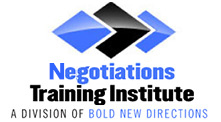How to Turn Negotiation Failures Into Learning Opportunities
Negotiation failures are bound to happen in any business. Whether it’s a failed attempt at a raise, a deal that fell through, or a dispute with a colleague, encountering setbacks in negotiations is inevitable. However, rather than looking at these situations as failures, they can be used as valuable learning experiences to help you grow and improve your skills in the future. Here’s how you can transform a negotiation failure into a valuable learning opportunity.
1. Reflect
Reflection is the first step in turning a negotiation failure into a learning experience. Take the time to review and analyze the situation, identify any mistakes or missteps, and consider what you could have done differently. Were your goals realistic? Were there any breakdowns in communication? Did you fail to prepare adequately? When you are honest with yourself and can identify the root causes of the failure, you gain valuable insight into how you should approach negotiations moving forward.
2. Seek Feedback
Constructive feedback is an invaluable tool for those looking to improve their negotiation skills. Reach out to the other party, a trusted colleague, or a mentor to gather their perspective. They may be able to offer insights into areas you hadn’t considered which will allow you to gain clarity on how you can improve.
3. Use it as a Chance to Adjust Your Strategy
It is important to view negotiation failures as opportunities for growth and development. This is the ideal opportunity to adjust your negotiation strategy and identify specific areas where you could improve, such as communication skills, emotional intelligence, or being an active listener. Consider what you could have done differently and how it may have impacted the outcome. This will allow you to better understand and prepare for future negotiations.
4. Seek Additional Training
Furthermore, this is the perfect time to seek additional training or resources to further develop your negotiation skills. You could enroll in a negotiation workshop or training seminar, or even work with a negotiation coach. Investing in your skill development will help you develop your mental toughness so you can navigate future challenges more effectively and work toward achieving your goals.
5. Embrace Change
Finally, you need to be willing to adapt your strategies and tactics where needed. Negotiation is a complex process so it’s important to be flexible and learn to embrace change. Stay up to date on new negotiation trends and focus on continuously refining and improving your approach for each negotiation.
While negotiation failures can be disappointing and frustrating, they can also be valuable learning opportunities. By reflecting on the root causes of the failure, you can improve your strategy for future negotiations. You can also invest in your skill development by signing up for one of Bold New Direction’s negotiation workshops. Call today and learn more about how our training workshops can help you reach greater success in future negotiations.
